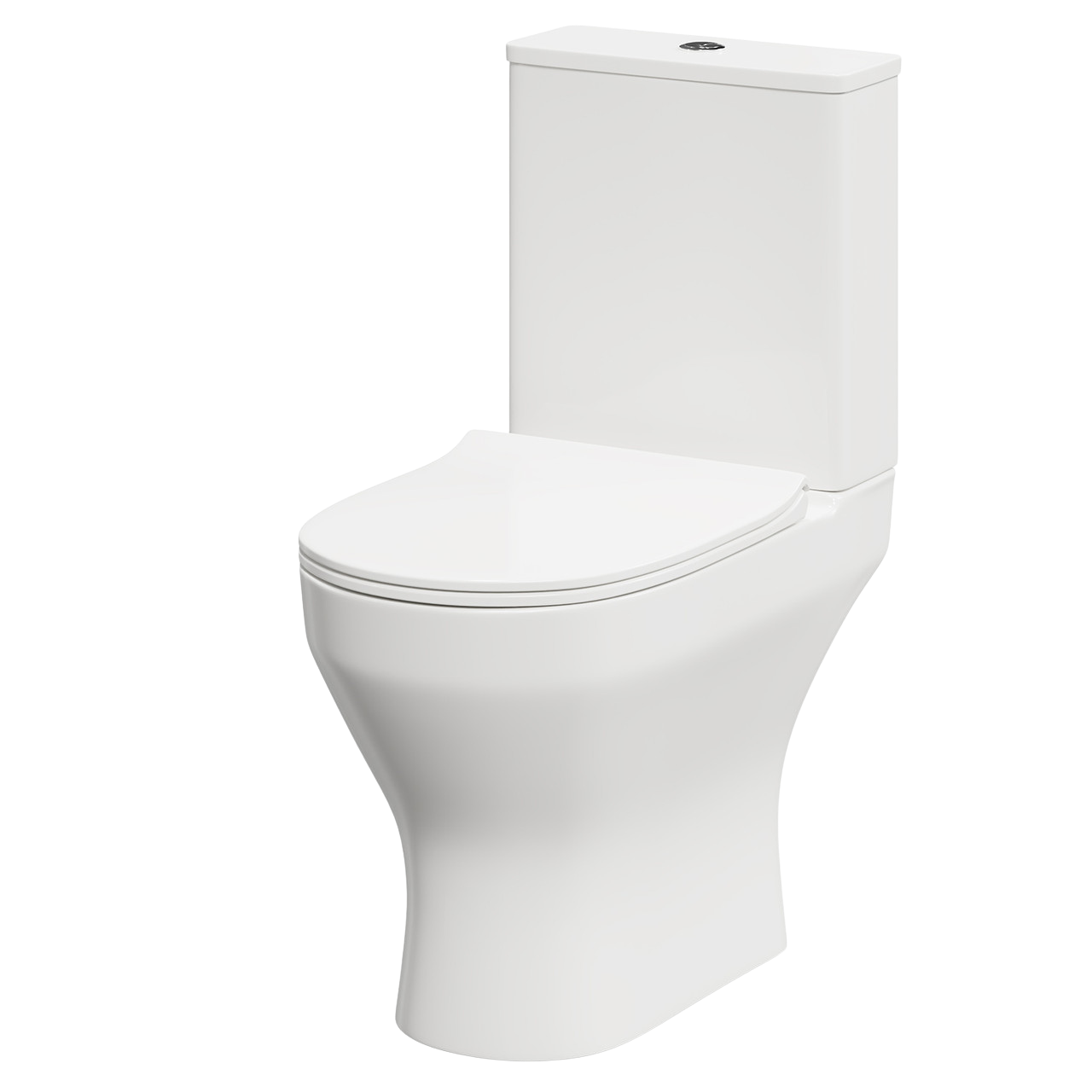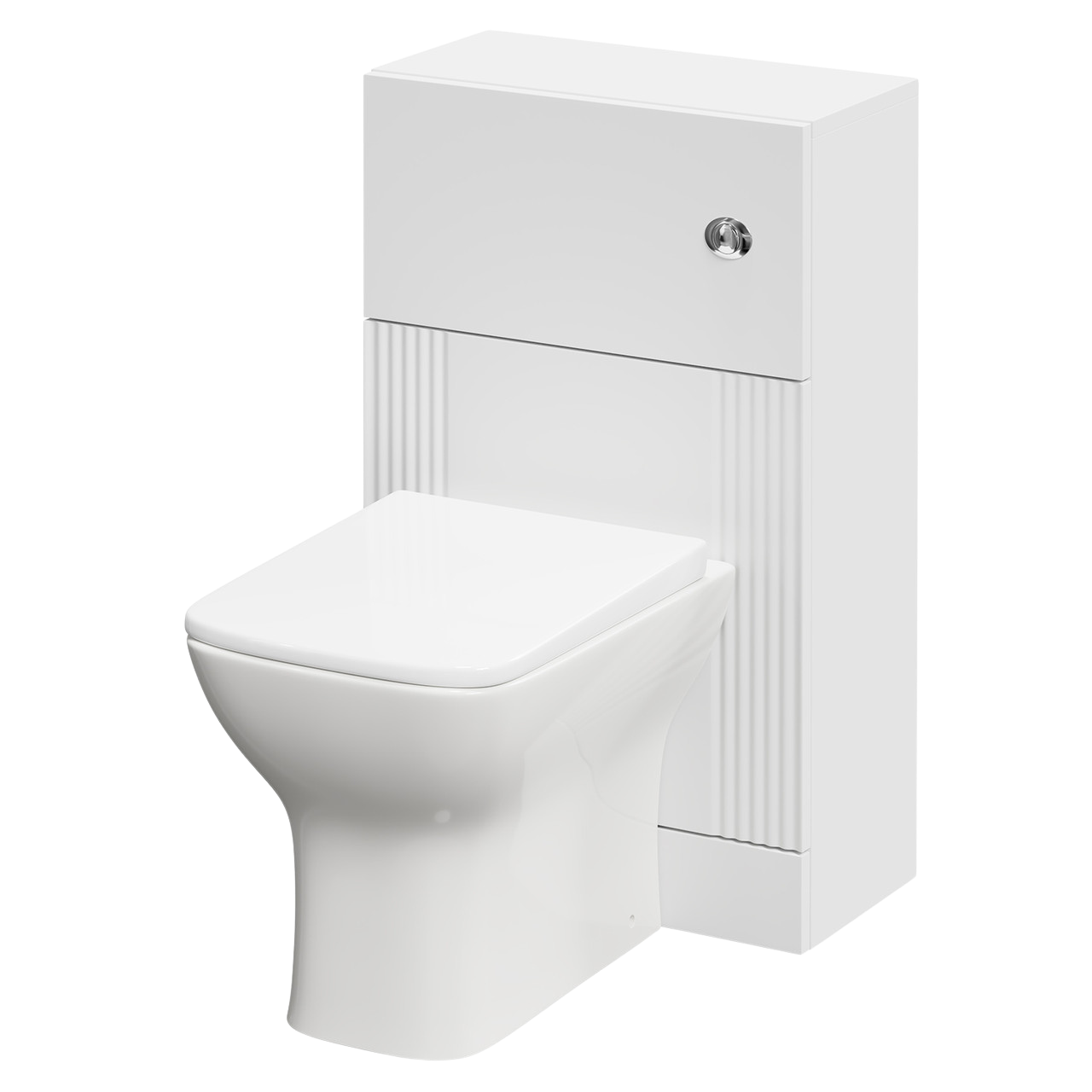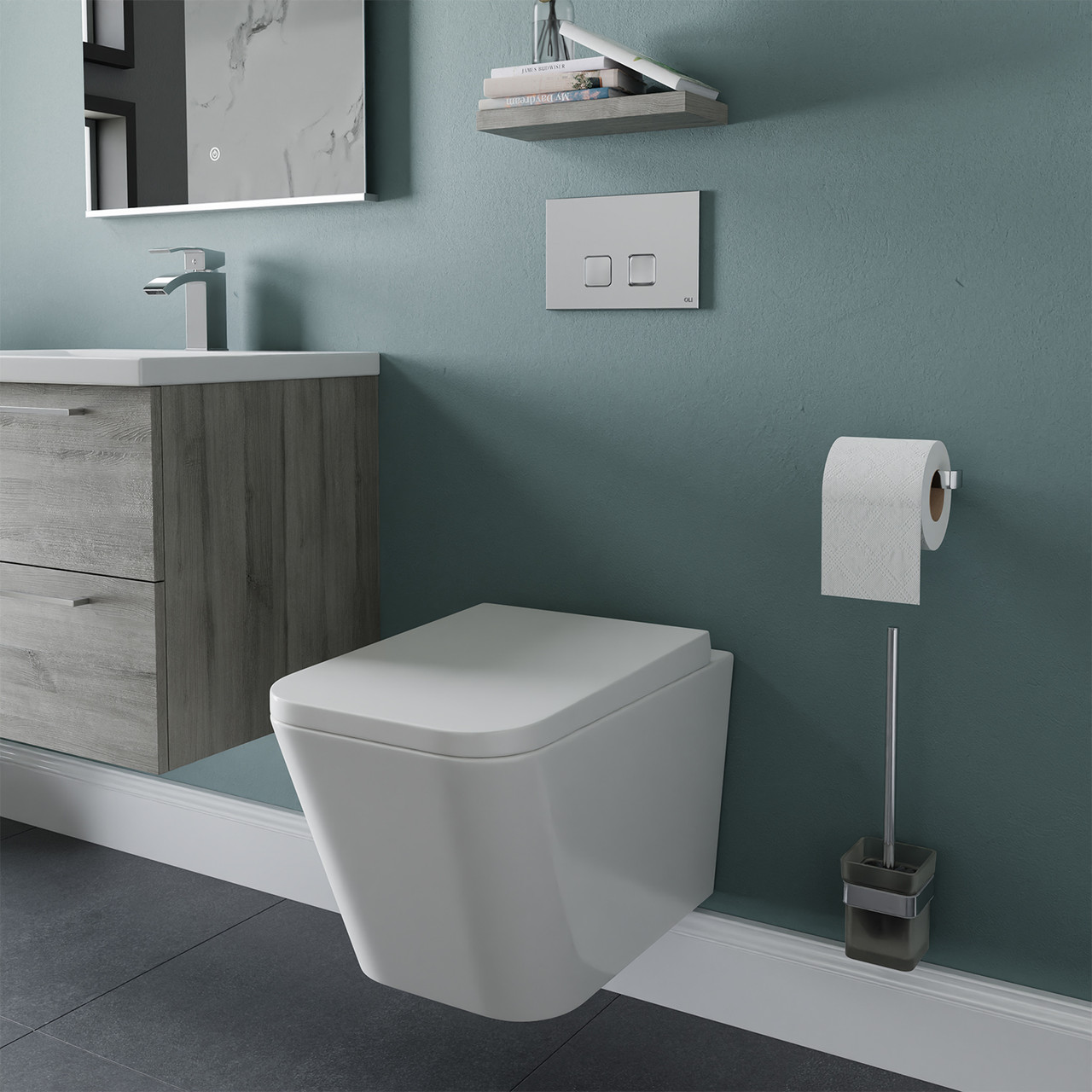What Is a Dual-Flush Toilet and How Do They Work?
14th Aug 2024
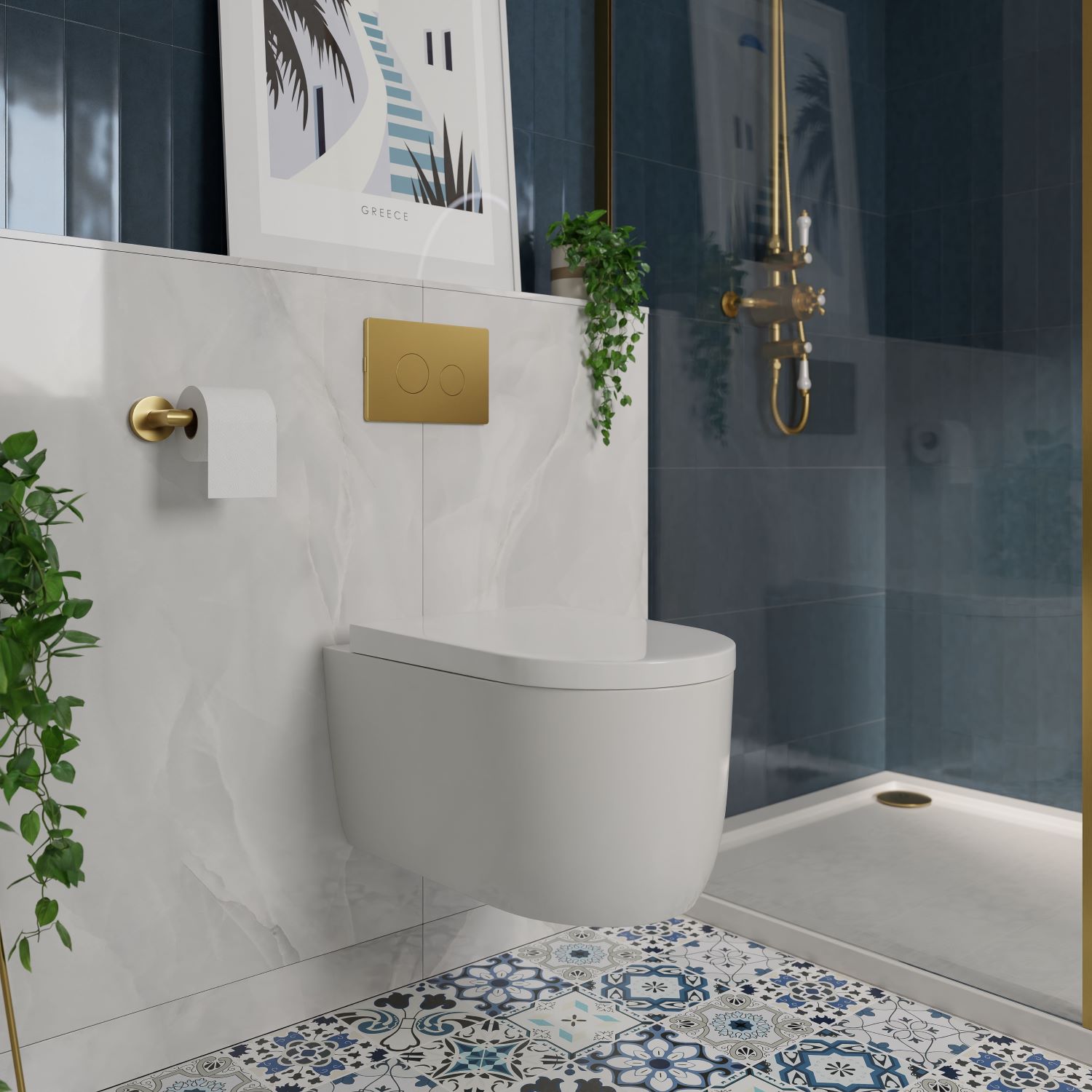
In the UK, a single person uses around 150 litres of water every single day. Plus, around 30% of the water that enters a home is used just to flush the toilet.
A dual-flush toilet could be the answer to a more environmentally friendly toilet solution. But what exactly is a dual-flush toilet, and why should you consider installing one in your bathroom?
In this guide, we'll cover everything you need to know about dual-flush toilets. We'll also explain the different types, with product recommendations from Brian Toward, Chief Executive Officer (CEO) here at Wholesale Domestic.
Contents
- What is a dual-flush toilet?
- How does a dual-flush toilet work?
- What are the benefits of dual-flush toilets?
- What are the components of a dual-flush toilet?
- Types of dual-flush buttons
- Types of dual-flush toilets
- Frequently asked questions
What is a dual-flush toilet?
A dual-flush toilet offers two flush options: a full-power flush for solid waste and a reduced-strength flush for liquid waste. This double functionality conserves water, making it an eco-friendly choice for any modern bathroom.
These toilets typically use built-in buttons on the top of the toilet cistern. Or, they use an additional flush plate mounted to the wall, rather than a more traditional cistern lever that needs to be pulled down to activate.
Dual-flush toilets were first developed in Australia in the 1980s to address a general lack of water. Today, they are widely recognised for their efficiency and sustainability and are a common feature in homes and commercial buildings around the world.
"Using a dual-flush toilet is a great way to save water and money," says Brian. "It's perfect for anyone who wants to make their bathroom more eco-friendly. Unlike regular toilets that use the same amount of water for every flush, a dual-flush system lets you choose how much water you need each time, which can really help reduce your water bills."
How does a dual-flush toilet work?
Understanding how a dual-flush toilet works is crucial to appreciating its benefits. Unlike traditional, single-flush toilets, which use a single mechanism to release water, dual-flush toilets typically have two buttons.
The button size usually corresponds with the flush strength, with the smaller button releasing around 3 to 4 litres. In contrast, the other bigger button releases a larger volume – around 6 to 9 litres – for solid waste.
Brian explains: "It's pretty straightforward how a dual-flush toilet works. When you press the button for a half flush, a smaller valve opens up, so less water flows from the tank into the bowl. For a full flush, a bigger valve opens, letting more water through. This way, the toilet only uses the amount of water you actually need each time."
What are the benefits of dual-flush toilets?
When choosing a new toilet system for your bathroom, it's vital to consider all the unique benefits to ensure that you're installing a toilet that suits your bathroom habits. Dual-flush toilet systems offer a range of advantages, from cost-saving potential to environmental benefits.
Environmentally friendly
One of the main advantages of a dual-flush toilet is the positive environmental impact. A standard single-flush toilet uses around 13 litres of water per flush, which can very quickly add up. While this is beneficial for clearing solid waste, liquid waste can be effectively cleared with far less water, meaning you’re wasting a significant amount.
In contrast, dual-flush toilets have the option of using a more powerful flush to clear solid waste, and a half flush for liquid waste. Not only does this allow you to control the amount of water used depending on the type of flush required, but it also uses less water in general due to being more efficiently designed. In fact, by using a dual-flush toilet, each household could save an average of 19.2 litres of water per day.
Cost-saving
Brian says: "While investing in a dual-flush toilet can seem daunting at first, with the initial unit and installation costs sitting slightly higher than a regular toilet, this is a decision that pays for itself over time. The savings on water bills make it a cost-effective choice in the long run."
Fewer blockages
We’ve all been there. You flush the toilet only to find the water level rising instead of falling. Blockages can be annoying when you’re trying to flush the toilet and get on with your day, but a dual-flush system can significantly reduce the likelihood of experiencing one.
Brian explains: "A regular toilet uses a pressure syphoning system to flush. It has a vessel inside the cistern that traps and compresses air to push waste out of the bowl. Over time, this system can get damaged, making the flush less powerful and causing blockages."
"In contrast, a dual-flush toilet uses gravity to help the water remove waste – meaning it's far less likely to become blocked as the amount of gravity, of course, remains consistent at any time."
Modern designs and aesthetic appeal
In addition to their functional benefits, dual-flush toilets also come in various modern designs that can enhance the overall look of your bathroom. Whether you prefer a sleek, contemporary style or a more traditional look, there's a dual-flush toilet to suit your taste.
What are the components of a dual-flush toilet?
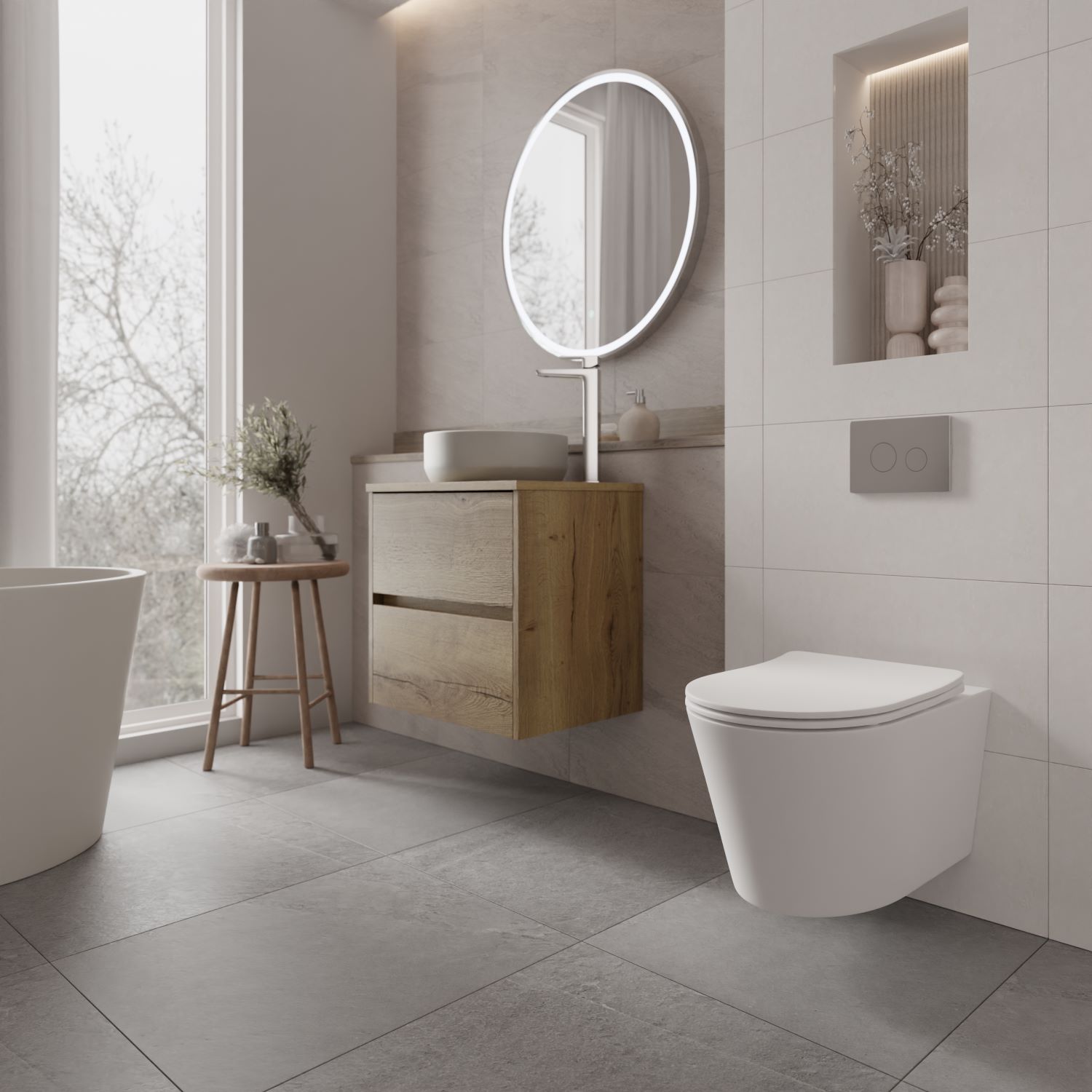
Knowing the components of a dual-flush toilet can help you understand how this innovative system works and why it's an excellent choice for your bathroom. Here, we'll break down the key components and their functions.
Flush buttons
The most distinctive feature of a dual-flush toilet is the flush buttons. These are often found on the top or side of the toilet tank and are designed to give you control over the amount of water used per flush.
Flush valve
The flush valve is a crucial component inside the toilet tank that regulates the release of water into the toilet bowl. In a dual-flush system, the flush valve is designed to operate differently for the two flush options.
Bowl
Brian explains: "Dual-flush toilets often have rimless or partially rimless bowl designs. This modern style lets water flow more effectively around the bowl during a flush, giving it a more thorough clean and preventing waste from sticking to the sides."
Cistern
The cistern, also known as a tank, is the part that holds the water used for flushing.
"Brian says: "In a dual-flush system, the tank is built to handle the double flush mechanism and ensure water is released efficiently for both options."
"To achieve this, the cistern has an internal flush valve that lets out different amounts of water depending on which button you press."

 FREE delivery over £500*
FREE delivery over £500* Visit our showrooms
Visit our showrooms Finance options available*
Finance options available* Apply for a Trade Account
Apply for a Trade Account
